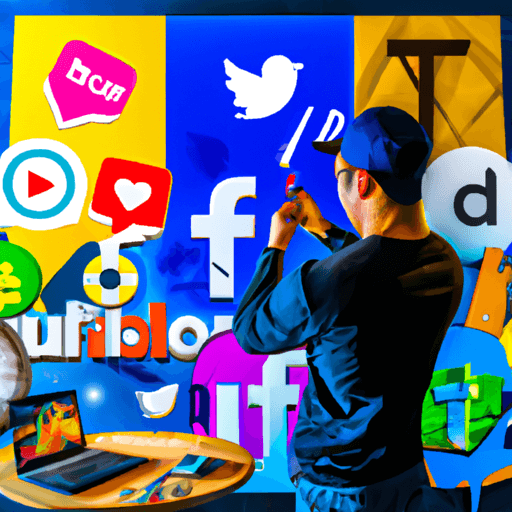How Social Media is Influencing Contemporary Art
Modern art was once considered the territory of an élite, largely segregated to museums and expensive galleries. However, the innovation of social media platforms has dramatically shifted this perception, effectively reshaping the ecosystem of contemporary art.
The Role of Social Media in Contemporary Art
Social media plays a pivotal role in the production, distribution, and consumption of contemporary art. As a platform that is accessible by many, it serves as a conduit for artists to showcase their works, without the need for traditional, physical galleries. This simple, yet profound, development plays a crucial part in democratizing art.
Democratization of Art
Democratization of art is one of the most significant impacts that social media has had, particularly for artists and admirers alike. With the rise of platforms like Instagram and Tumblr, anyone can share their creativity to a global audience, breaking down the barriers established by the traditional art industry.
Rise of Digital Art and Virtual Galleries
The proliferation of social media has also paved the way for the rise of digital art and virtual galleries. Digital artists can now construct art pieces using various digital tools and gather an audience from their own homes, thereby eliminating the geographical barriers to reach and engagement. Case in point, digital artist Beeple whose artwork was recently auctioned for $69 million.
Audience Engagement
Social media has not only enhanced the visibility of art but also revolutionized audience engagement. With virtual showrooms and online exhibitions, consumers can express appreciation, provide feedback, and connect with artists in real time, fostering a more personalized interaction and experience-
Opportunities and Challenges
The nexus of social media and contemporary art has inevitably offered exciting opportunities to artists, such as wider outreach, increased visibility, and the ability to derive inspiration from a global artistic community. However, some challenges arise, like the risk of art theft or the dilution of artistic value amidst a stream of quick, easily consumable content.
In the words of renowned art critic Jerry Saltz, The digital age levels hierarchies. With the internet and art, the genie came out of the bottle and is granting many wishes: good, bad, and indifferent.
In conclusion, the role of social media in contemporary art offers a fascinating exploration of the intersection of technology, public engagement, and creativity. It remains to be seen how these platforms will continue to redefine art in the digital age.

















Comments
Leave a Comment